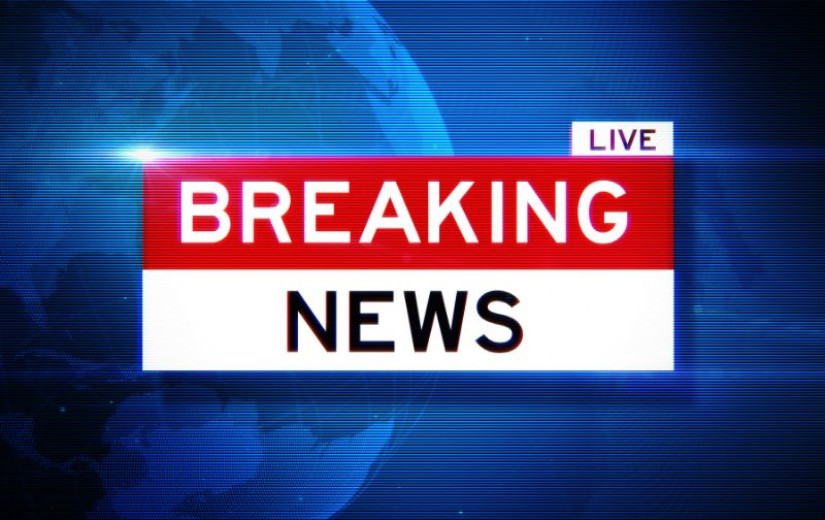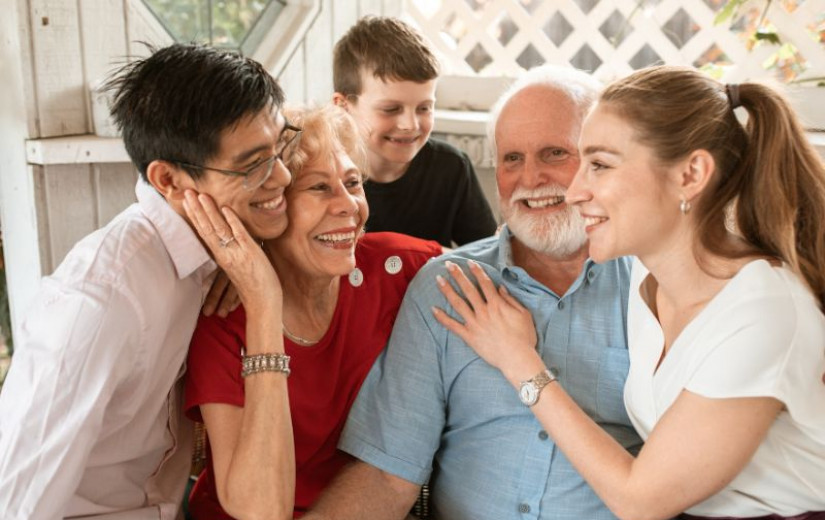

“In the Baltics right now there are two artistic tendencies,” Solvita Krese, director of the Latvian Centre for Contemporary Art in Riga, tells Observer. “One is that art is becoming more political, reflecting the geopolitical situation we are in, and this sense of civil awareness. The other is exactly the opposite; artists are tired, exhausted and they create meditative works about nature, beauty and things that heal.”
With the recent news of three Russian MiG-31 fighters that spent 12 minutes in Estonian airspace—an incursion Tallinn called “unprecedentedly brazen”—and multiple Russian drones penetrating Polish skies, the Russian threat feels closer than ever in the Baltic region, pressing itself upon institutions and shaping the way artists survive and create.
For Krese, this is nothing new; she has steered the Latvian Centre for Contemporary Art for decades and is used to facing crises. It is precisely from a time of struggle that Survival Kit was born, back in 2009, when Latvia was hit hard by the financial crisis. “The budget of culture was reduced by more than sixty percent. There was no money for culture, no resources. At the same time, you had all these empty shops along Riga’s main street. We took them, legally squatted them and turned them into pop-up exhibitions.”
What was almost a spontaneous reaction, and meant to be for one edition only, turned into a full-fledged festival over the years, as the world kept bringing more crises—the pandemic, ecological catastrophes, the Russian invasion of Ukraine. “We realized, how could we stop a festival called Survival Kit when crisis is exactly what it was built for?” she says. “It would be an oxymoron.”

This year, the festival (with the theme “The House of See-More”) was curated by the artists’ collective Slavs and Tatars and curator Michał Grzegorzek and unfolded inside a former knitting factory with bright windows and a courtyard in the Grīziņdārzs creative quarter. For the theme, the curators drew on the Simurgh, the legendary bird that appears throughout Eurasian myth, and through this metaphor the annual international contemporary art festival in Riga explores the fragile state of transnationalism, framing freedom as a political and metaphysical experience.
“We’ve always said our focus is the space between the Berlin Wall and the Great Wall of China—territory has been mediated too long through Moscow or Western Europe,” explains Payam Sharifi from Slavs and Tatars, who aimed to connect directly, to build what he calls horizontal solidarities. He saw the Baltics sharing many elements with Central Asia: this history of being peripheral, of being spoken for by larger powers. “That sense of being ‘in-between’—between Germanic and Russian imperial influences, between Latin and Cyrillic alphabets, between Catholicism and Orthodoxy—resonates deeply with our work,” says Payam.

To the artist-curator, it was also important to bring in the Simurgh, a Sufi narrative, precisely because Eastern Europe often defines itself as having nothing to do with Islam. “In fact, its history has always been shaped by encounters with Islam, from Kiev’s alliances with the Tatars, to Orthodox–Muslim collaborations against Catholic powers, to the shadow of the Ottoman Empire,” says Payam. “It’s a reminder that Eastern Europe’s self-definition has often involved dismissing Islam as something ‘foreign,’ when actually the region was always entangled with it. Survival Kit was the perfect place to open that conversation.”
Engaging local communities
Krese recalls one performance that stunned her, by Simona Orinska, that in dance performance embodied the Simurgh in a ritual presentation connecting Sufi dance, the dervish turning, as well as representing local traditions. “It’s not easy to involve the Latvian audience. But this time, people had tears in their eyes. Almost the entire audience turned together in silence. A Lithuanian singer repeated an old folk song again and again. It was meditative, magical. A real spiritual space opened.”
For Payam, the festival is about local communities as well as the temporary communities that form in the presence of art. In fact, in a context where institutions are fragile or absent, participation itself becomes radical. “To move together, without words, to inhabit that vulnerability collectively, that’s a form of survival,” he said. “That’s more important than producing a singular ‘statement’ about art.”
He also underlined the way artworks could be both seductively beautiful and politically charged. “I think the strength of this festival was that you could be drawn into an artwork through its beauty, its aesthetics, and only later realize the political trauma underneath.”

That balance of being captivated formally, then confronted politically, was embodied in works like Palestinian Shadi Habib Allah’s hardened shrink-wrapped shells of packaging that seem minimal and elegant, but the emptiness behind them points to the disappearance of corner stores in the U.S. and the precarity of life in Gaza.
The precarity of Baltic institutions
Krese has fought for decades against the institutional fragility in Latvia. “We’ve been fighting for a national contemporary art museum for more than forty years,” she said. “Rem Koolhaas had a project, David Adjaye had another. But it was unfortunate, from the passing away of investors, the collapse of banks that were meant to support us and scandals of money laundering. Every time, the state withdrew. And now, with war next door, all the budget goes into defense.”
This absence shapes audiences. “Without a museum, people don’t grow up with contemporary art. There are gaps in education, gaps in perception,” explains Krese, who is experimenting with ways to bridge them, including the establishment of Art Mediators. “We invited people to learn about contemporary art and talk to visitors; we thought about it more as conversations than regular guided tours. Mostly, seniors stayed because they had the time. And now seniors bring seniors. They welcome them, and they speak in a familiar language. Suddenly, we have a strong senior audience, intellectual, curious. It completely changed who comes to our events.”
Payam agreed, stressing how such works function in a Baltic context. “In regions like Latvia, where audiences aren’t saturated with contemporary art, you don’t need cynicism or irony. People approach works earnestly. That makes it possible to present pieces that are both aesthetically strong and politically charged, and the audience receives them without the defensive distance you might find elsewhere.”
He finds that sincerity is what makes Riga a very special place where, as artists-curators, they pay attention not only to concepts but also to how the works live together. “That tells you something about the current condition of art here. Artists are not outside society; they are right in the middle of it. That urgency seeps into their work. But at the same time, others create works of escape, meditations on nature, pieces that heal. And both are necessary—you can’t survive on urgency alone.”

Yet the war has transformed artists as much as audiences. “Even so many artists went to civil defense trainings at the moment,” Krese said. “It’s not the army exactly, but a kind of training you go through to be ready to fight if something happens.”
The arts in Tallinn
In the meantime, in Tallinn, artist Merike Estna is preparing Estonia’s pavilion for Venice in the ARS building, a former Soviet factory now filled with artists’ studios. “I’ve been obsessed with painting for the last ten years. The question for me is, how does painting respond to instability? Painting is usually fixed, but nothing is fixed anymore, especially during this time. So I try to create paintings that are alive, performative, something that changes, that heals.”
Her practice has always been a series of experiments. “I painted on floors so the viewer is always moving, with infinite perspectives. I made canvases into clothes. I draped them on ceramic vessels, so they are fragile. Lately, I returned to canvas, but also as an event, not an object. For Venice, I’ll continue testing. Painting as something that breathes, that responds to the world.”
Living in Mexico City for many years shaped her perspective. “It was busy, polluted, but culturally amazing. I missed Estonia’s fresh air, the Nordic breeze. When you step outside your home, you see it differently. You appreciate what you already had.” She traced her interest in tradition to childhood, from her grandmother who was deeply religious and said it’s a sin to sit and do nothing. “She was always making something, crafts. I realized that this whole visual language, mostly women’s work, was rejected in painting. My challenge was to bring it back.”
She thinks that her representation of Estonia is part of a tradition of artists she admired, including Edith Karlson’s pavilion. “It was incredible,” says Merike. “It’s a challenge to follow her. But the performative aspect hasn’t been as present in Estonian pavilions. This is the right moment to take that step.”
Merike sees many Estonian artists working with crafts and traditions, but in very different ways. “It’s not the same visual language, but maybe the same impulse.”
Merike described Estonia’s scene as institutionally driven. “Here, artists don’t need to be represented by galleries to show work. We rely on institutions, on support. It’s different from the U.S., where commercial galleries dominate. In Estonia, it’s more artist-run, more institutional.” At ARS, she enjoys the sense of community. “Tallinn is small, so the art world is tight-knit. In Mexico, it’s fragmented; you spend hours crossing the city. Here, there is a feeling of being together.”
The artist feels that this precarity and instability have always been part of Estonian life. “Estonia has always been on the frontline. This fragility is always present, shaping everything. My work is not directly political, but it’s influenced by this awareness. It affects how I paint, what I aim for. Nothing is certain.”
From Riga to Tallinn, these sensibilities echo one another and point to the same Baltic condition: the awareness that nothing is fixed, that institutions are fragile, and that art must respond to this tension, whether directly or through escapism.
In those different modalities, the Simurgh evoked by Survival Kit provides a powerful metaphor of an operating system. The myth in the Persian poem The Conference of the Birds recounts hundreds of birds setting out to find the mythical creature, and after an arduous journey only thirty remain. When they finally arrive, they discover there is no Simurgh, only themselves, reflected back as a collective.
“The pun is literal: in Persian, si means thirty and murgh means birds. So ‘Simurgh’ is just ‘thirty birds,’” explains Payam. “At the end of six hundred pages of mystical poetry, you get what is essentially a bad pun, and that collapse between the metaphysical and the comic is something we loved. It’s rare to end a metaphysical epic with wordplay, but it’s precisely in that deflation, that mix of the esoteric and the ridiculous, that the message lands: survival and transcendence happen in the collective, not the singular. It’s about realizing that you, together, are the very thing you were searching for.”









